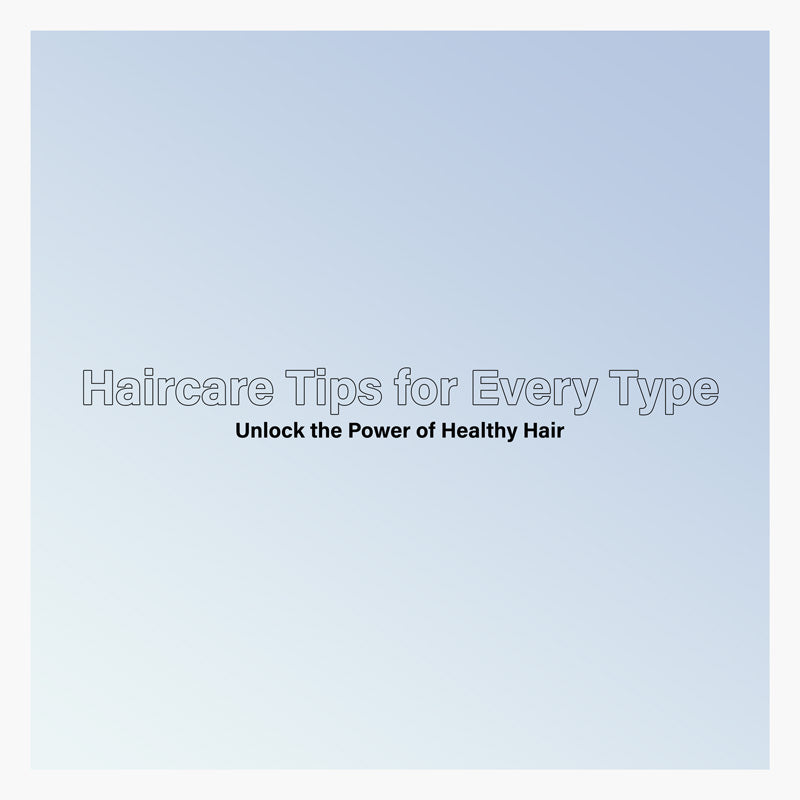Understanding Your Hair Type
You must first understand your hair type to create an effective haircare routine.
Hair Types and Textures
Hair types are generally classified into straight, wavy, and curly. Each type has its unique characteristics, requiring specific care and maintenance.
Determining Your Hair's Porosity
Hair porosity refers to how well your hair can absorb and retain moisture. Knowing your hair's porosity will help you choose the right products and techniques to keep it healthy and strong.
Actual Haircare Habits
Establishing a consistent haircare routine is crucial for maintaining healthy hair.
Washing Your Hair
Wash your hair with a sulfate-free shampoo suitable for your hair type. Avoid washing your hair daily, as it can strip natural oils and cause dryness.
Conditioning Techniques
Always use a conditioner after shampooing to help lock in moisture. Deep conditioning treatments can nourish your hair, especially if it's dry or damaged.
Drying and Styling
Avoid using high heat when drying or styling your hair. Instead, use a microfiber towel or a t-shirt to blot your hair dry and minimize frizz gently.
The Role of Diet in Hair Health
Eating a balanced diet rich in vitamins, minerals, and healthy fats can promote hair health from within.
Haircare Tips for Specific Hair Types
Each hair type requires specific care and attention to maintain health and appearance.
Straight Hair
Straight hair tends to get oily faster than other hair types. Use a lightweight conditioner and avoid applying it to the roots to prevent greasiness.
Wavy Hair
Wavy hair can be prone to frizz. To combat this, use a hydrating shampoo and conditioner and apply a light leave-in product to help define your waves.
Curly Hair
Curly hair requires extra moisture to prevent dryness and frizz. Use a sulfate-free shampoo and a rich conditioner, and incorporate regular deep conditioning treatments into your routine.
Coily Hair
Coily hair is the most fragile hair type and needs extra care to prevent breakage. To maintain healthy oily hair, use a sulfate-free shampoo, a creamy conditioner, and a leave-in product to provide moisture and protection. Remember to detangle gently with a wide-tooth comb or your fingers.
How to Deal with Common Hair Problems
Understanding how to tackle common hair issues can help keep your hair looking and feeling its best.
Hair Loss
If you're experiencing hair loss, consider incorporating scalp massages, a balanced diet, and gentle haircare techniques to help stimulate hair growth and prevent further damage.
Dandruff
To combat dandruff, use an anti-dandruff shampoo, maintain a healthy scalp, and incorporate natural remedies like tea tree oil to help soothe the scalp and reduce flaking.
Split Ends
To prevent and minimize split ends, trim your hair regularly, avoid excessive heat styling, and use a hair mask or deep conditioning treatment to nourish your hair.
Maintaining Hair Health as You Age
Your hair may become thinner, drier, and more fragile as you age. To maintain healthy hair, adapt your hair care routine to suit your changing hair needs, and ensure you're eating a nutrient-rich diet.
Professional Hair Treatments
Professional hair treatments, such as keratin, hair masks, and scalp treatments, can provide additional support for maintaining hair health. Consult a hairstylist to determine which treatments best suit your hair type and concerns.
The Importance of Regular Haircuts
Regular haircuts help prevent split ends, promote healthy hair growth, and keep your hair fresh and well-maintained.
Final
Implementing a consistent and personalized haircare routine, understanding your hair type, and addressing common hair problems are all essential steps toward achieving healthy, beautiful hair. In addition, remember to consider the role of diet, professional treatments, and regular haircuts in maintaining your hair's overall health.
FAQs
Q: How often should I wash my hair?
A: Washing frequency depends on your hair type and personal preference. Generally, avoiding washing your hair daily is best to prevent stripping natural oils.
Q: What's the difference between a leave-in conditioner and a regular conditioner?
A: A leave-in conditioner is a lightweight, water-based product applied after washing and left in the hair, providing continuous moisture and protection. A regular conditioner is applied after shampooing and rinsing out.
Q: How can I protect my hair from heat damage?
A: Use a heat protectant before heat styling, and opt for low heat settings on your styling tools to minimize damage.
Q: What causes hair loss, and what can I do to prevent it?
A: Hair loss can be caused by genetics, hormonal imbalances, stress, and poor haircare practices. To prevent hair loss, maintain a healthy diet, practice gentle haircare techniques, and consider consulting a healthcare professional if the issue persists.
Q: Are salon treatments necessary for maintaining healthy hair?
A: While not necessary for everyone, salon treatments can provide additional support for specific hair types and concerns. Consult a hairstylist to determine if professional therapies are suitable for your hair.

